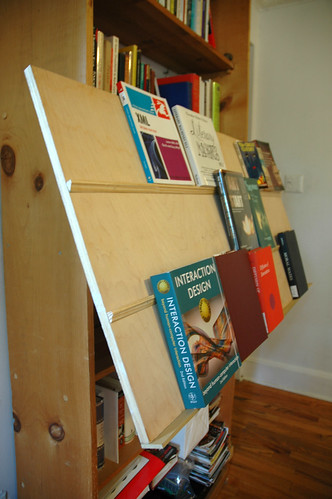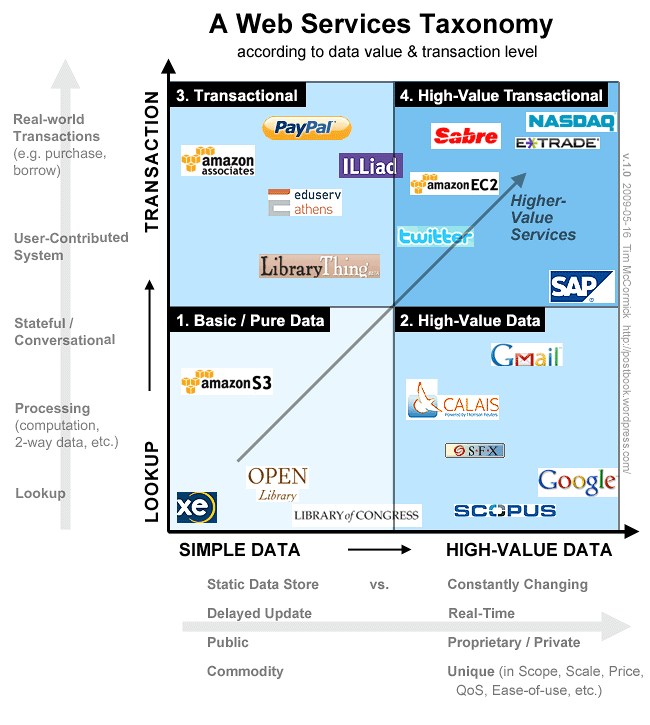
Roy Tennant in Library Journal writes about the newly-unveiled Google Wave platform and protocol. Wave proposes to expand email into an integrated “hosted conversation” capable of incorporating email, IM, documents, etc., and allowing flexible sharing and the replaying of interaction histories.
Observing how Wave’s model is more open and real-time than email, Tennant says: “those of you out there who are just as social as you wish to be at the moment….your world is about to be blown wide open.” (“Just How Social Do You Want to Be?”).
To me, that is a rather disturbing thought… are we such captives of technology or our employers that we’d want or let our whole communicative behavior be “blown apart” because a new tool comes along?
Anyway, adoption doesn’t usually happen that way. The body of research on innovation diffusion, as summed up by Everett Rogers, suggests that adoption generally happens slowly, partially, often not at all, and usually by social networks rather than by imposition. (cf. http://en.wikipedia.org/wiki/Diffusion_of_innovation).
Rogers on key factors in adoption: “Innovations that are perceived by individuals as having greater
- relative advantage
- compatibility
- trialability
- observability
- less complexity
will be adopted more rapidly than other innovations. Past research indicates that these five qualities are the more important characteristics of innovations in explaining the rate of adoption.”
— “The Diffusion of Innovations.” (Amazon).
From what I’ve seen, Google Wave is truly innovative and potentially game-changing. The Google Wave video demo is well worth watching if you have any interest in collaboration methods, or the future of work.
My first impression is that they’ve gathered many innovative, existing communication models — such as real-time collaborative editing, wikis, IM, threaded email discussions, tagging, social networking, Twitter/microblogging — and woven them together into something elegant and broadly usable. Given the open design (based on a public protocol, with complete API set, etc.) and Google’s tremendous reach and execution skill and global mindshare, perhaps they can bring these communication models to much wider adoption than ever before.
On the other hand, outside of the early adopters, people generally “satisfice” their needs with the tools that are the simplest, most trusted, and most supported by their peers. If Google Wave is an extension of email, and most people are comfortable with and used to email, how quickly could the additional value of Wave motivate widespread adoption across the whole online population?
Also, regarding the “opening” of social behavior, we must recognize that for most people, everyday life requires a degree of dissembling, non-accountability, and rationing of social attention — and we probably woudn’t want things otherwise.
Call it slack (Tom DeMarco), or “necessary illegality” (Foucault), or evasion, secrecy, or social exclusion, this is human nature, or human nature in our world, at least — which we shouldn’t expect or want to be easily blown apart by Google Wave.







